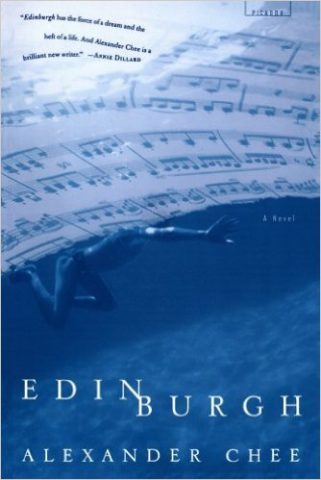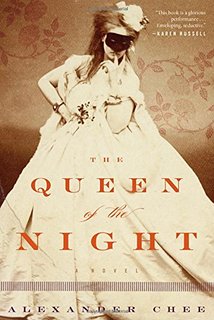 Edinburgh
Edinburgh
by Alexander Chee
Published by Welcome Rain Publishers
Published October 16, 2001
Fiction
224 pgs. • Find on Amazon.com
Reviewed by Stephen O. Murray
November 28, 2001
Edinburgh is a heart-wrenching, very accomplished first novel about creation of art and destruction of lives.
Alexander Chee dives into the very troubled waters of adolescent male homosexual desire and of adult exploitation of authority. The narrators are young gay men who hate what “Big Eric” Gorendt, the director of a boys’ choir, does in abusing young blond boys, even though they recognize a similarity to their own desires for males.
Big Eric is the father of one of the narrators, Warden. Fifteen years after Big Eric was apprehended and imprisoned on multiple counts of child molestation, Warden sets out to seduce his swimming coach, Aphias Zee, not knowing that “Fee” (as he is called) was one of the stars of the choir his father ravaged.
The coincidence of Fee and Warden landing in one small school in Maine out of the vastness of America can be swallowed, and they are both credible, troubled characters (Fee haunted by guilt, Warden fueled by rage at his absent father). Their narrative voices are not very distinguishable except that Fee contemplates his Korean father’s parents and Korean folklore about foxes in human form and has more life experiences (like the author, attending Wesleyan, living in San Francisco and New York, along with having a Korean father and a Yankee mother, though I fervently hope that the novel is not autobiographical!).
The young Fee and Big Eric were rivals for Peter, whereas Warden wants Fee rather than wanting whom Fee has or whom Fee wants. That is, Fee’s sexual desires are for males, but for males of his own age, whereas Warden is an adult molester (and Big Eric a child molester). Warden wants a male intermediate between his own age and that of his father who has just been released from prison. (The erotic charge is not a continuation or recapitulation of the earlier one, because Big Eric was not particularly interested in the dark-haired twelve-year-old Fee. Both generations of Gorendts are aware that Fee is/was gay, however. And in some sense, both generations of Gorendts deny that they are gay despite their overwhelming interest in male bodies.)

I don’t find Fee’s male “faculty wife,” Bridey, a convincing character. I found Fee’s choir-mate sex-buddy Zach believable, though his ending is under motivated and has surprisingly little impact on Fee. Similarly, the novel’s ending seems forced.
The title refers to a 1361 letter by a Norman named Andrew Hunter that was found in an unfinished Edinburgh cathedral in which he was isolated during an epidemic of the bubonic plague. Fee works as a research assistant for a scholar who is publishing that letter. Like Fee, this hunter felt he had the mark of death on him but did not die, as Fee survives choir-mate friends who commit suicide and another who succumbs to AIDS-related dementia and death. Intriguing as this parallel is, Chee assembles the series of similar-looking research assistants after the scholar dies, but can’t think of anything to do with this scene. It seems that he could have done more with the parallel excavation of an abandoned 18th-century Maine house, too.
Although I have a number of cavils (including occasionally crashing against a phrase that makes no sense to me, even on repeated readings), I think that Edinburgh is more than a promising first novel. It is very accomplished and frequently heart-breaking. It dives into deep waters that sometimes gave me the bends and would likely induce nausea in parents of boys who are intensely involved in institutions like the Pine State Boys’ Chorus.
published on epinions, 28 November 2001
©2001, 2016, Stephen O. Murray

